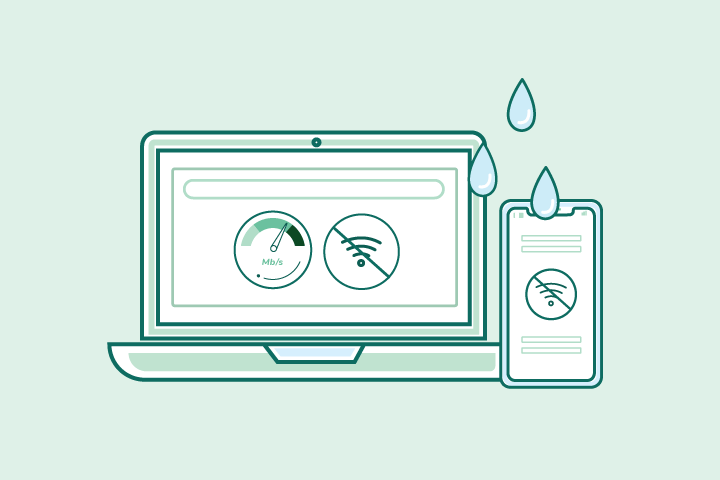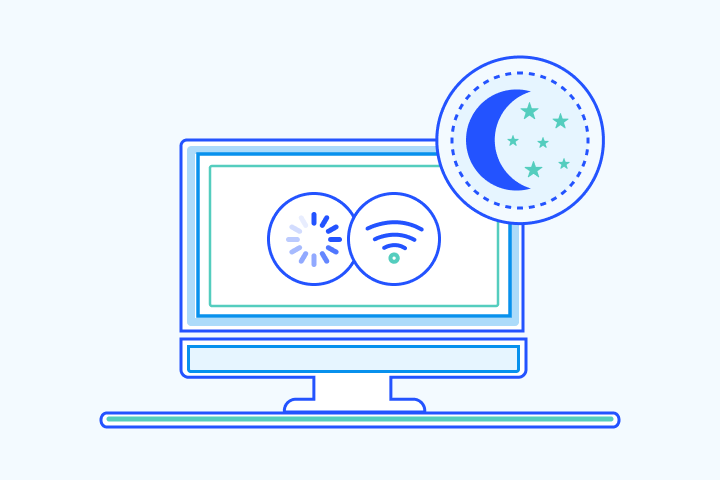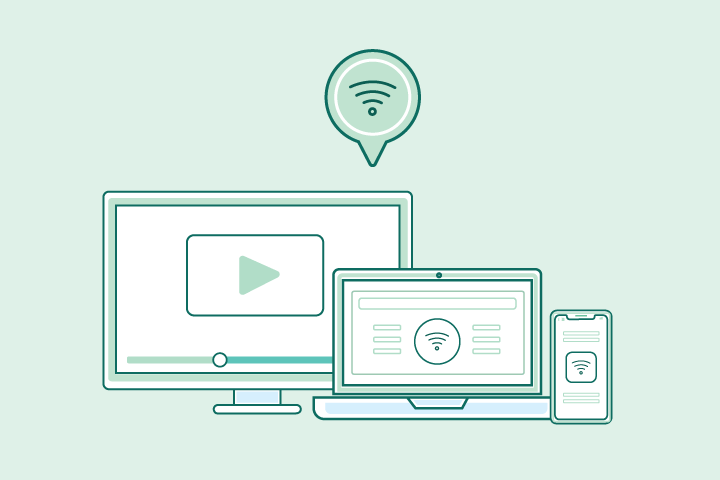Does Weather Affect Internet Speed?

HighSpeedOptions prides itself on providing honest, quality content. While we may be compensated when you make a purchase through links on our site, all opinions are our own. Here's how we make money.
Table of Contents
Some people welcome rain as long as they’re cuddled up on a couch. Others dread dark skies. And that’s understandable. It’s loud. It’s messy. Many believe it’s kryptonite for internet speeds. But before calling your internet technician for help, read our FAQs below. We answer questions about poor weather affecting internet speeds.

Does Weather Affect Fiber Internet?
While extreme storms like tornados can damage a network, poor weather rarely interrupts internet on its own. Fiber internet relies on grounded fiber-optic cables to transmit signals between a provider and home. These fiber lines get buried 3-4 feet deep to protect them from outside elements or accidentally being dug up. So, small amounts of rain, wind, and snow should not affect your internet speed.
If a storm is strong enough to tear down power lines, rip cables out of the ground, or damage your provider’s main hub, then you may experience slower speeds.

Does Weather Affect Cable Internet?
Cable internet operates on coaxial cables safely buried underground. These cables are made of a sturdy outer material to withstand harsh weather conditions and erosion. Small amounts of rain, wind, and snow should not affect the speed of your internet connection.
However, larger storms with heavy winds have the potential to knock down power lines and uproot grounded wires when strong enough. It’s common for entire networks to lose power or encounter slower internet speeds if this happens.
Does Weather Affect DSL Internet?
DSL internet runs on an infrastructure of grounded wires. These wires have two benefits. First, they’re securely buried underground. Secondly, they’re double-coated in hard plastic to protect them from common weather changes. Therefore, small amounts of rain, wind, and snow shouldn’t affect your speed.
Slow internet speeds are more likely due to secondary effects of a storm. Heavy winds can knock down power lines or uproot grounded wires if strong enough. When this happens, your network may lose power. This causes reduced speeds or complete service interruptions we all dread.
Does Weather Affect Satellite Internet?
Unlike grounded lines, satellite internet relies on space technology to send and receive data over the air. Bad weather can directly affect this. Internet signals travel between three different satellite dishes. One dish is at a provider’s main hub. One dish is at a resident. And one dish is in outer space orbiting Earth.
Anything that passes between those three points has the potential to interfere with your signal. That, of course, includes your internet speed.
This connection type is prone to slower speeds or total service interruptions due to bad weather. This can include rainstorms, snow, and heavy winds. In addition, fallen debris, heavy rainfall, or curious animals also impact performance.
If Bad Weather Isn’t the Problem, What Is?
It’s common for people to associate poor internet service with poor weather conditions. However, as we addressed above, your internet issues are probably due to something else.
The reasons for slow internet are likely within your control. The most common cause is high network traffic.
During a storm, most people like to stay indoors where it’s dry and warm. This results in more people online at once. And that is what often leads to slower speeds during a storm.
How Can I Improve My Connection During a Storm?

If you experience slow internet during a storm, there are several things you can do to boost your connection without calling for help.
Restart Your Router
Like our bodies, electronics need regular breaks to function well. Restarting your router and/or modem is an easy way to troubleshoot internet issues. We recommend doing this on a monthly basis. Set a reminder on your phone or use an outlet timer to automatically reset them.
Move Closer to Your Router
We all like to cuddle up on the couch or find a reading nook during a storm. However, our tendency to retreat into corners of our homes may result in slower speeds. This is because WiFi signals slowly weaken as they travel farther from the source. In addition, barriers like furniture and walls also impact the performance of your internet. You can fix this by moving closer to your router or investing in WiFi extenders to provide full coverage.
Upgrade Your Internet Plan
Network congestion during storms always leads to slower speeds. To offset this, you may want to upgrade your internet plan. Different internet activities require different bandwidths. And no matter what you do, there’s a limit depending on what you pay for. Upgrade your internet speed to fit your lifestyle and save you headaches down the road.
Be Prepared
Bad weather is one of those phenomena we cannot control. What we can control, though, is how we prepare for rainy days. If you’re looking for reliable internet that will keep you connected at all times, consider your connection type and available providers near your area. Enter your zip code here to compare current plans and pricing near you.
Find providers in your area

Table of Contents





